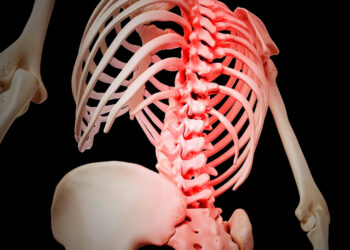
The Pacific Ocean released heat into the atmosphere in 2023
blickwinkel/Alamy
An unusual “triple dip” La Niña that suppressed ocean temperatures in the Pacific Ocean for three years running may have primed the planet for the dramatic surge in global heat experienced in 2023.
While global temperatures had been expected to increase around this time, due in part to greenhouse gas emissions and warm surface waters in the Pacific, they weren’t anticipated to peak until early 2024. As it was, record-breaking heat emerged from September 2023, months ahead of schedule.
Julius Mex at the University of Leipzig in Germany and his colleagues set out to explore what exactly happened in late 2023 to trigger the onset of this extraordinary heat. “What we’re trying to explain is why the change in temperature in boreal fall was so extreme,” he says.
The team used datasets that combine historical weather observations with climate models to investigate circulation, temperature, cloud cover, radiation and precipitation in the Pacific during 2022 and 2023.
They conclude that the background state of the Pacific, which unusually had been stuck in cooler La Niña conditions since 2020, was a key factor. That suppressed ocean heat and encouraged the development of low-lying clouds, helping to reflect more of the sun’s radiation back into space.
When the El Niño weather pattern finally emerged in 2023, the swing from La Niña to El Niño was so dramatic that it produced unusual effects on air circulation and rainfall over the western Pacific Ocean, allowing the ocean to release even more heat than anticipated into the atmosphere.
In parallel, the shift to El Niño also triggered a sudden and dramatic fall in cloud coverage in the eastern Pacific, allowing Earth to absorb much more radiative heat. “This is something that can drive the annual temperature change,” says Mex.
Karsten Haustein, also at the University of Leipzig, wasn’t involved in the work but says he broadly agrees with the analysis. “If you have a triple dip La Niña, then you are not allowing the ocean to release heat,” he says. “So you build up heat deeper in the ocean basin, and eventually it has to come out.”
Mex says the findings are in line with research published in recent months suggesting the disappearance of ocean cloud cover was a key driver of the rapid jump in temperatures beginning in 2023. “I think it’s a perfect fit,” he says.
Richard Allan at the University of Reading in the UK says the work improves understanding of how cloud cover changed in the Pacific during 2022 and 2023. But he stresses that human-caused climate change, alongside cuts to planet-cooling aerosol pollution, were also major factors in reducing ocean cloud cover and driving warming.
“The size of the global temperature rise in 2023 was only possible due to the rising overall heating of the planet caused by rising greenhouse gases, but also reducing and dimming clouds related to the warming and also declining aerosol particle pollution,” says Allan.
Topics:
Source link : https://www.newscientist.com/article/2492660-rare-triple-dip-la-nina-may-explain-why-2023-was-so-hot/?utm_campaign=RSS%7CNSNS&utm_source=NSNS&utm_medium=RSS&utm_content=home
Author :
Publish date : 2025-08-18 12:00:00
Copyright for syndicated content belongs to the linked Source.








